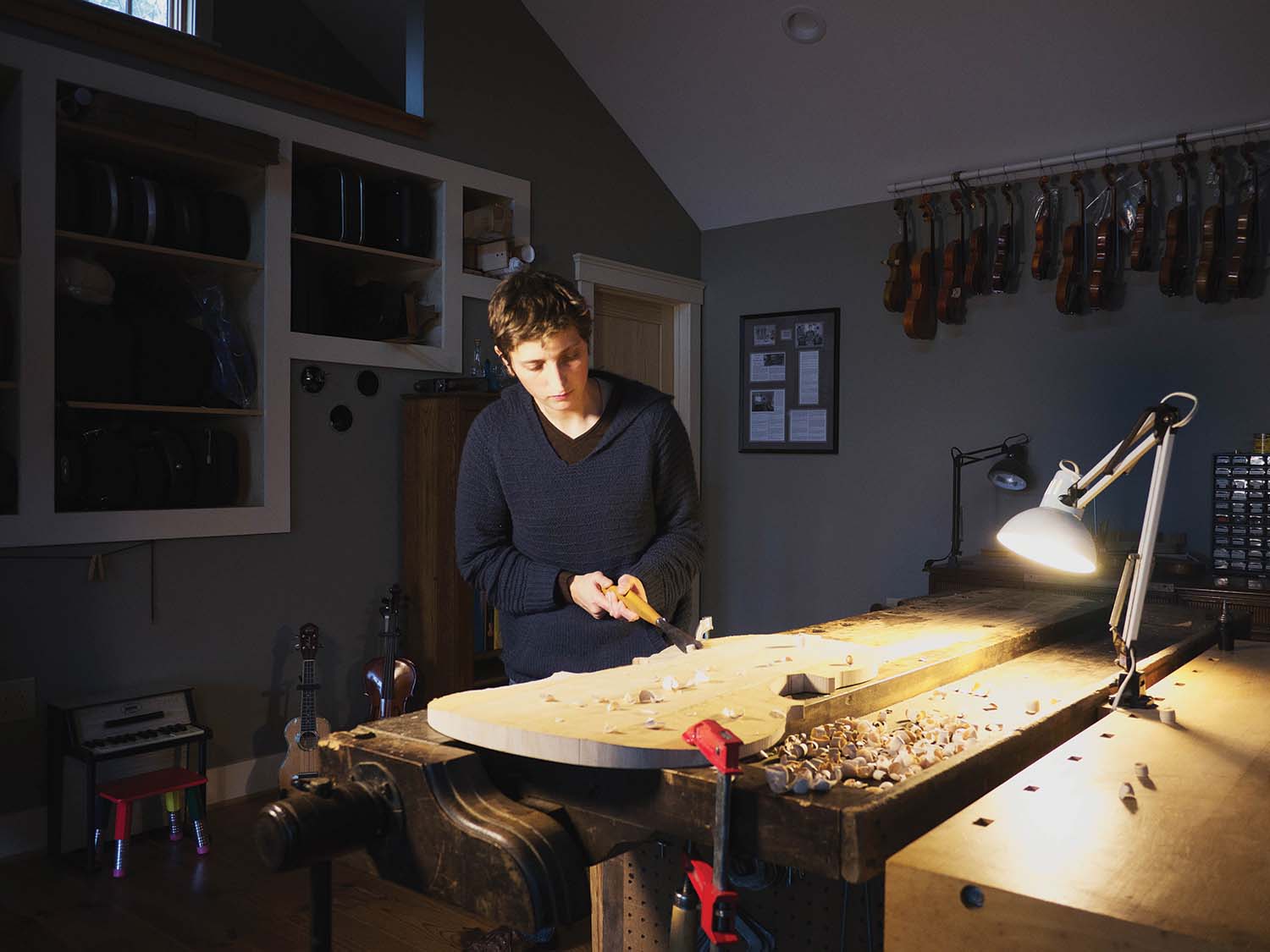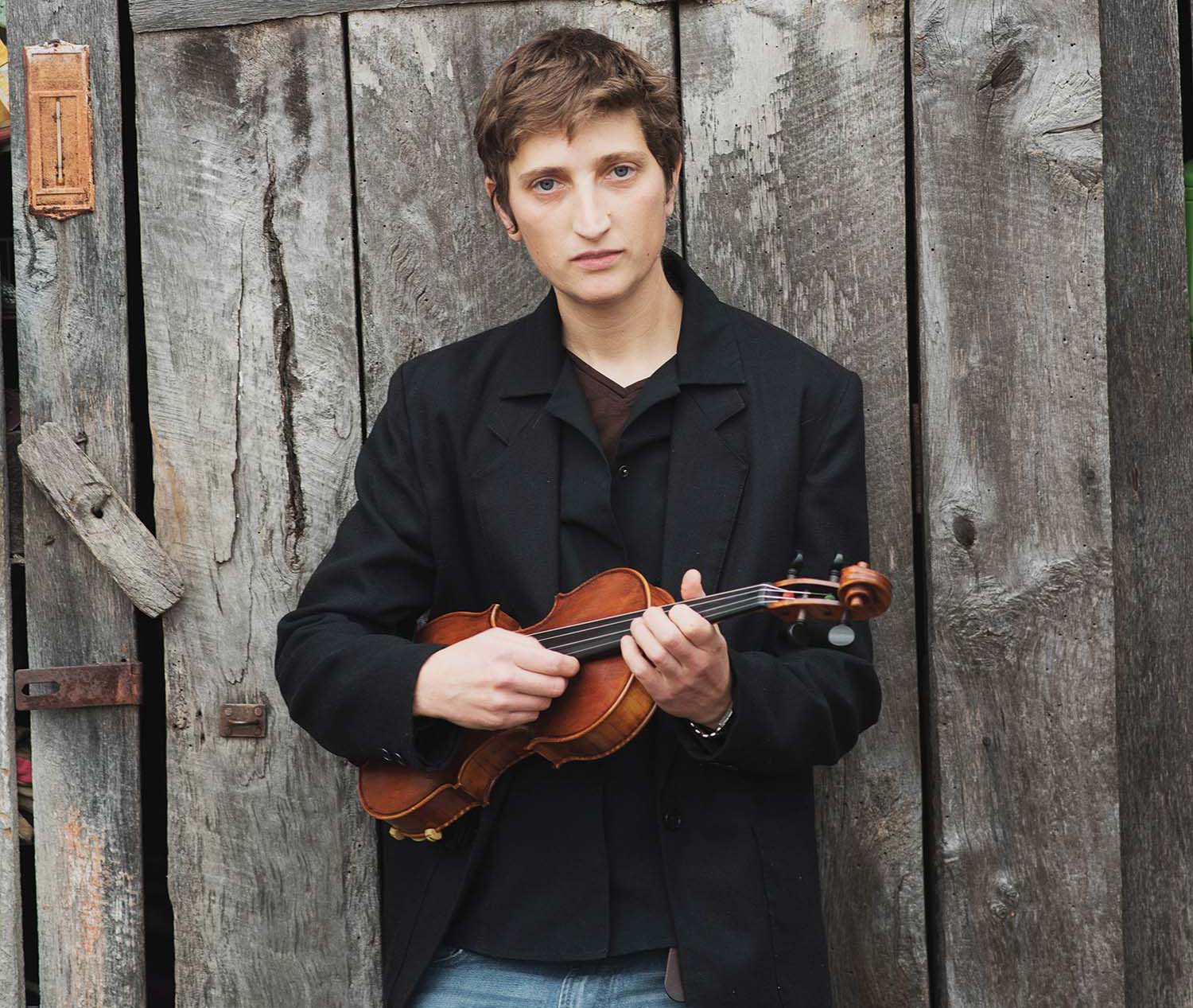
Violin maker Kate Rickenbacker picked up her trade in the traditional way, apprenticing for three-and-a-half years under masters at the Chicago School of Violin Making. But she’s quick to admit that she had a little extra help from the oldest master of all: the legendary Italian craftsman Antonio Stradivari.
During her training, Rickenbacker had the chance to closely study a Stradivarius violin owned by the Chicago Symphony Orchestra. “You can look at photos and specifications, but being able to hold one and play it yourself is a little bit different,” she says. That personal experience informs the instruments she now crafts by hand at her studio in Black Mountain.
While her templates come from the classical tradition, Rickenbacker has made violins for artists of many genres. Members of the Detroit and Roanoke symphonies use her instruments, as do Canadian fiddler April Verch, a Chicago jazz violinist, and several old-time Irish players. She also plays one of her own violins in area ensembles such as the Blue Ridge Orchestra and the Haw Creek Sweethawks fiddle group.
Rickenbacker describes how changes to an instrument’s configuration can make the same violin suitable for different styles. “Players want the measurements and string lengths to be pretty much the same between violins, but the way the instrument is set up can vary a lot,” she says. “For example, fiddlers tend to like a flatter bridge and lower string heights because they’re often playing multiple strings at once.”

However, Rickenbacker does produce some custom violins. To illustrate, she points to one of her unique cornerless models. Without the traditional outward flares on its body, this instrument cuts a smooth profile. When viewed from the back, the violin appears like a bottom-heavy hourglass filled with layers of varnished maple; from the front, an electric pickup and thin, jagged sound holes give the instrument a distinctively modern vibe.
The maker finds even more creative leeway with her violas, for which she developed her own pattern. “Full-sized violas can range from 15 to 17.5 inches — the bigger the instrument, the more it projects, but smaller body sizes are easier to play,” Rickenbacker explains. “My design is a little wider with thicker ribs, so you still get some of that volume while keeping the warmth that people want out of a viola.”
Rickenbacker is currently in progress on her first cello, based on another Stradivarius instrument, and she also offers instrument services such as set up, bow re-hairing, and crack repair. When not at work, she’s training an apprentice in the ways of the violin: her three-year-old son.
“Violin has been a part of my life for my entire life. It’s social, therapeutic, a way of expressing myself,” she says. “It’s important for me to have playing and sharing with other people be a part of my son’s life, as well.”
Rickenbacker Violins, 109 Rainbow Lane, Black Mountain. For more information, call 828-337-1306 or visit rickenbackerviolins.com.
Kate. What is your price to repair a bow?
Thanks!
Hi Kate, I’m going to find a way to see you for advice and show you my two fiddles. We I can muster up a ride I will call and make appointment.
Can barely wait, want be back to fiddling for my ears only, 😄